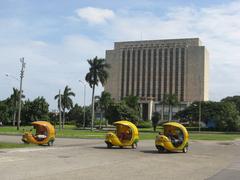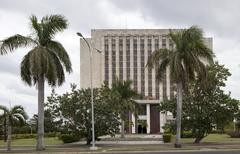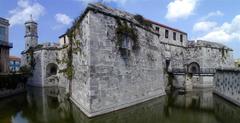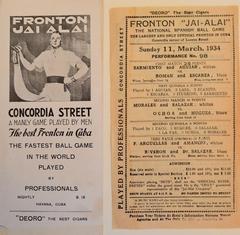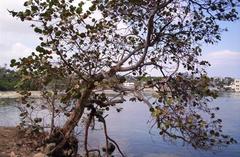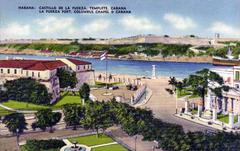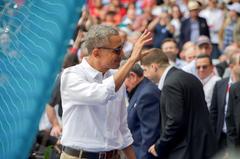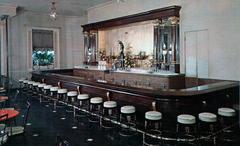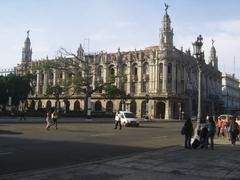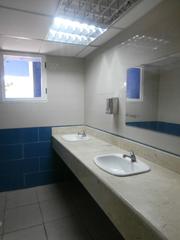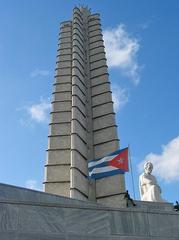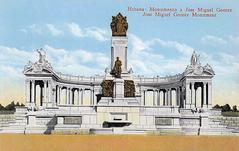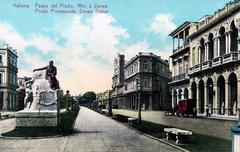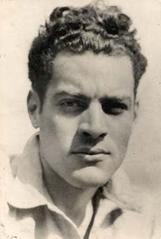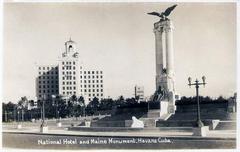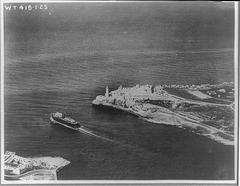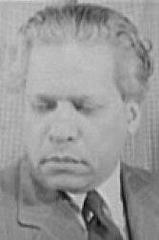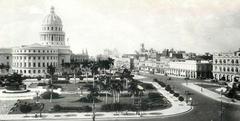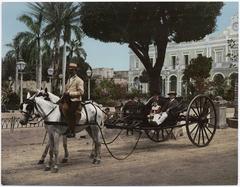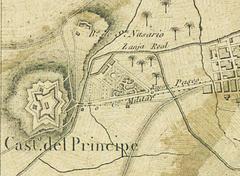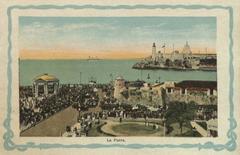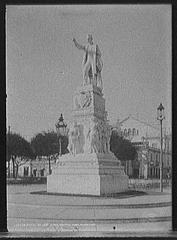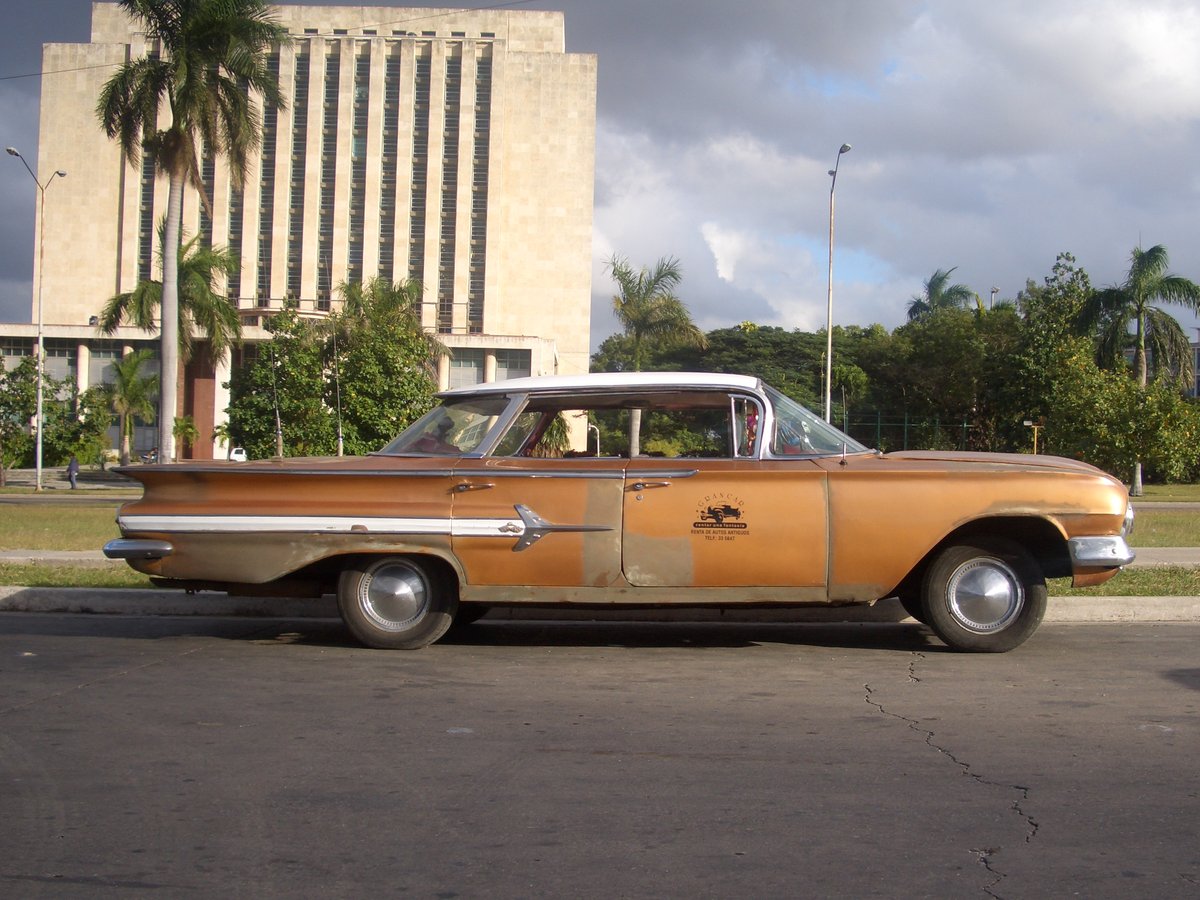
National Library José Martí Havana: Visiting Hours, Tickets, and Complete Guide
Date: 14/06/2025
Introduction
Nestled in the heart of Havana’s Vedado district, the National Library José Martí (Biblioteca Nacional de Cuba José Martí, BNCJM) stands as a monumental guardian of Cuba’s literary, historical, and cultural heritage. Founded in 1901 in the wake of Cuban independence, the library honors José Martí—a poet, revolutionary, and national hero—by safeguarding the island’s intellectual legacy and fostering public education. Its modernist building, completed in the 1950s, is an icon of mid-century Cuban architecture and a testament to the nation’s cultural aspirations. Today, the BNCJM is not only a repository of over six million documents but also a dynamic center for research, exhibitions, and cultural events that engage both scholars and visitors. This comprehensive guide details everything you need to plan your visit, including the library’s history, collections, architectural features, visiting hours, ticketing, accessibility, guided tours, and nearby attractions. For official updates and further reading, consult resources such as the MIT Faculty Newsletter, Cubasí, and Lonely Planet.
Table of Contents
- Introduction
- History and Foundation
- Architectural Features and Location
- Collections and National Role
- Research, Culture, and Events
- Practical Visitor Information
- José Martí: The Library’s Namesake
- Preservation and Modernization
- The Library in Havana’s Cultural Landscape
- Notable Events and Commemorations
- Frequently Asked Questions (FAQ)
- Conclusion and Visiting Tips
- References and Further Reading
History and Foundation
The National Library José Martí was established in 1901, soon after Cuba’s independence from Spain, with the goal of preserving and disseminating the nation’s intellectual and cultural treasures (MIT Faculty Newsletter). The library is named for José Martí, whose ideals of education and social justice are reflected in its mission (Factsnippet). Initially, the library operated from modest quarters, but as its collections grew, so did its national significance.
The foundation of the library was made possible by the donation of private collections, notably from Domingo Figarola Caneda, who became its first director. The library’s mandate as Cuba’s legal deposit institution ensures it receives copies of nearly all works published in the country, establishing it as the island’s primary bibliographic repository.
Architectural Features and Location
From its humble beginnings, the library evolved into a striking modernist structure. The current building, inaugurated in 1958, is located in Havana’s Vedado district, adjacent to the Plaza de la Revolución and the José Martí Memorial (MIT Faculty Newsletter). Designed by a team of Cuban architects, the building exemplifies rationalist and functionalist design with monumental scale, a three-bay entrance portico, a grand rotunda, and U-shaped reading rooms illuminated by tall windows (Cubamodern.com).
The library’s placement situates it among other major landmarks, including the National Theatre of Cuba and the Ministry of the Interior, embedding it in the city’s cultural and political core (Trek Zone).
Collections and National Role
The BNCJM boasts a vast collection of over six million documents—books, periodicals, manuscripts, maps, photographs, music scores, and audiovisual materials—that collectively narrate Cuba’s history from the colonial era to the present (Tiplr). Special collections include the José Martí Archives, rare books, Cuban independence documents, and music and performing arts archives. The library is a key partner in the Digital Library of the Caribbean, contributing digitized Cuban periodicals and photographs.
Functioning as the rector of Cuba’s national system of public libraries, the BNCJM oversees over 400 affiliated libraries, ensuring access to information and culture throughout the country (CubaPLUS Magazine).
Research, Culture, and Events
The library serves as a hub for academic and cultural life in Havana. It supports multidisciplinary research, hosts international conferences, book fairs (notably the Havana International Book Fair), art exhibitions, lectures, and storytelling workshops. Youth and children’s programs, reading rooms, and dedicated spaces for researchers and scholars further enhance its role as a living institution.
The library also commemorates significant events, such as the annual Marcha de las Antorchas on January 27, honoring Martí’s legacy (MIT Faculty Newsletter).
Practical Visitor Information
Visiting Hours
- Monday to Saturday: 9:00 AM – 5:00 PM
- Closed: Sundays and public holidays
Always confirm current hours on the official website.
Tickets and Entry
- General Admission: Free
- Special Exhibitions/Tours: May require a nominal fee or advance registration
Accessibility
- Fully wheelchair accessible, with ramps and elevators. Assistance can be arranged at the entrance (Audiala).
Guided Tours and Facilities
- Guided Tours: Available by appointment; inquire through the library’s website or at the information desk.
- Reading Rooms: Quiet, spacious, and well-lit; access to some materials may require registration or credentials.
- Exhibition Halls: Host rotating exhibitions on Cuban history, literature, and art.
- Digital Resources: Access to digital catalogs and some online materials (internet connectivity may be limited).
- Café: Small onsite café for refreshments.
Photography
- Permitted in public and exhibition areas. Restrictions apply in archives, reading rooms, or special collections. Flash and tripod use may require special permission.
Travel Tips
- Identification: Bring a passport or photo ID for access to certain areas or to register as a reader.
- Language: Most signage is in Spanish; basic Spanish or a translation app is helpful.
- Dress Code: No formal code, but respectful attire is recommended.
- Nearby Landmarks: Combine your visit with the José Martí Memorial, Museum of the Revolution, and Necrópolis Cristóbal Colón (Travel Passionate).
José Martí: The Library’s Namesake
José Martí’s legacy permeates every facet of the library. His writings, preserved in the archives, continue to inspire Cuban identity, education reform, and civic engagement. Annually, the library is a focal point for Martí-related commemorations and educational programming.
Preservation and Modernization
Since the revolution, the BNCJM has prioritized preservation, digitization, and modernization. Climate-controlled storage, digitization of rare and fragile materials, and international collaborations help safeguard Cuban patrimony for future generations (CubaPLUS Magazine).
The Library in Havana’s Cultural Landscape
The National Library José Martí is integral to Havana’s vibrant cultural scene. Its location at Plaza de la Revolución places it at the crossroads of history, politics, and art. The library’s programming, architectural significance, and collections make it a key destination for both locals and international visitors (WhichMuseum).
Notable Events and Commemorations
The library regularly hosts:
- International Book Fairs
- Art and photography exhibitions
- Lectures and academic conferences
- Youth storytelling and reading workshops
- Commemorative events for José Martí’s birthday and other national holidays
Check the library’s website for up-to-date event schedules.
Frequently Asked Questions (FAQ)
Q: What are the opening hours of the National Library José Martí?
A: Monday to Saturday, 9:00 AM to 5:00 PM. Closed Sundays and public holidays.
Q: Is there an entrance fee?
A: General admission is free; some exhibitions or guided tours may require a small fee.
Q: Is the library accessible for visitors with disabilities?
A: Yes, with ramps, elevators, and assistance available.
Q: Are guided tours available?
A: Yes, book in advance or inquire onsite.
Q: Can I take photographs inside?
A: Permitted in public areas; restrictions apply in special collections or research rooms.
Q: What identification is required?
A: A passport or government-issued ID may be needed for certain services.
Q: What other sites can I visit nearby?
A: José Martí Memorial, Museum of the Revolution, National Theatre, and Necrópolis Cristóbal Colón.
Conclusion and Visiting Tips
The National Library José Martí is a vital gateway to Cuba’s past and present—where history, culture, and civic identity converge. Its architectural grandeur, comprehensive collections, and dynamic programming make it an essential stop on any Havana itinerary. For an optimal visit:
- Review updated hours and events on the official website
- Download the Audiala app for guides and live information
- Bring necessary identification and plan for at least 1–2 hours onsite
- Explore neighboring sites at Plaza de la Revolución for a holistic cultural experience
For more on the library’s collections, history, and cultural programming, consult MIT Faculty Newsletter, Cubasí, Lonely Planet, CubaPLUS Magazine, Trek Zone, Tiplr, and the official library site.
References and Further Reading
- MIT Faculty Newsletter
- Cubasí
- Lonely Planet
- WhichMuseum
- CubaPLUS Magazine
- Cubamodern.com
- Trek Zone
- Tiplr
- Audiala
- Wikipedia
- Cubarte
- Nations Encyclopedia
- University of Florida Libraries
- Travel Passionate
- TripCuba
- Official BNCJM website

